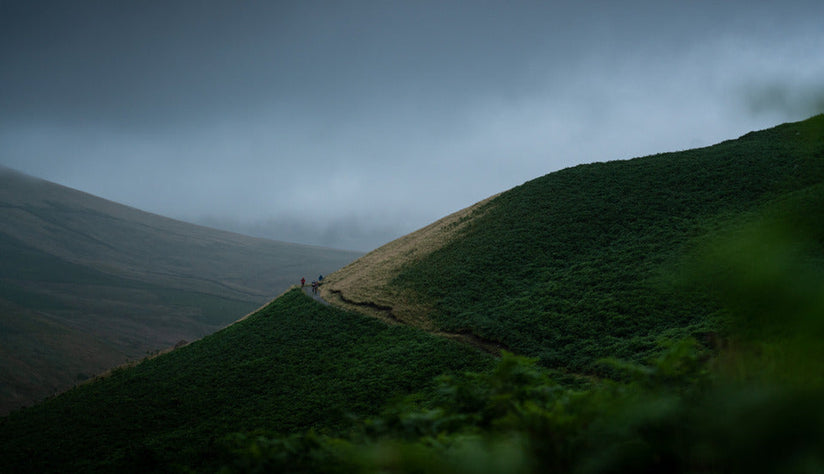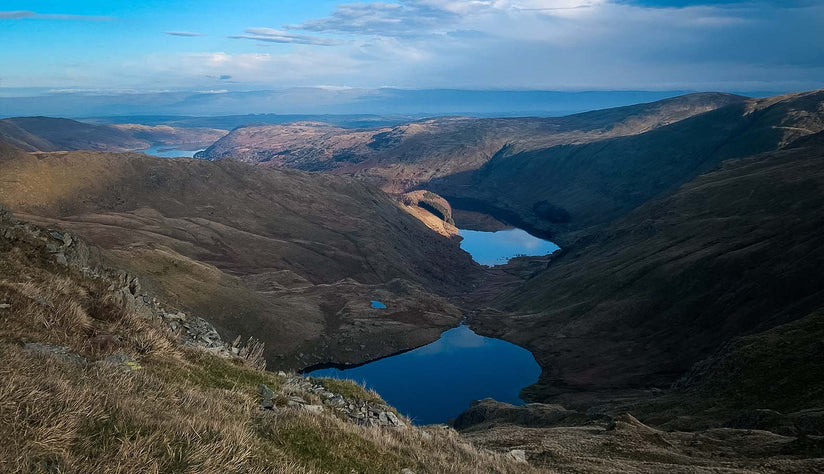Imagine an overhead map of the Himalaya marked with mountaineering routes. The thicker it is, the more people have attempted it. You’d see Everest as a broad red line. Even wider lines would travel up the ‘trekking peaks’ of Island Peak (6,189m), Mera Peak (6,476m), Tent Peak (5,663m) and Yala Peak (5,700m). Like the great Scottish Munros, the highest, the easiest and the most accessible get climbed most.

Without seeing through the window of a Bombardier Dash 8, it’s hard to imagine the scale of the Himalaya. Within the range is ten of the world’s highest 14 8,000+ peaks and 50 mountains that poke above 7,000 metres. The remote Karakoram range alone has 100 peaks over 6,100 metres. The arc of the Himalayan mountain range extends for 2,400km, that’s London to Kiev. It’s unimaginably vast. Then there’s the 7,000km-long Andes range, plus remote peaks of Myanmar, Russia and former Soviet countries.
When taken into account, the idea that man has climbed the greatest mountains in the world seems ludicrous. We’re not even close. This is, of course, a golden opportunity for mountaineers. There are hundreds, probably thousands, of unclimbed peaks. But be warned: judging just how many is akin to monks arguing about the number of angels you can fit on a pinhead.

Why unclimbed?
There are many of reasons why a peak remains unclimbed. They are inaccessible, or they are in dangerous areas are common factors. The government of Bhutan, for example, doesn’t allow climbing over 6,000 metres for spiritual reasons. Other considerations include, well, simply that no one has planned it. Sanglung in Tibet? At 7,095 metres around the 139th highest mountain in the world? No one is really bothered. There’s a more prominent mountain next to it and, well, that’s more attractive.
The 40th highest mountain in the world, Gangkhar Puensum at 7,570 metres is the highest unclimbed peak in the world. That it is the highest mountain in Bhutan should explain why. Although, a subsidiary summit of Liankang Kangri was climbed from Tibet in 1999.

The second highest unclimbed peak? Probably Muchu Chhish (7,452 metres), which apart from wondering how to pronounce ‘hh’, is wildly inaccessible. There have been attempts to summit it, but none successful. It’s not off limits for any reasons, just that the walk-in is probably quite significant.
Then there’s Mount Kailash, a beautifully rounded 6,638-metre mountain but sacred to four religions: Bon, a Tibetan folk religion, Buddhism, Hinduism and Jainism. Reinhold Messner was offered it but declined. A Spanish party also were offered permits by the Chinese but it was met with worldwide condemnation. Messner’s withering comment was “If we conquer this mountain, then we conquer something in people’s souls. I would suggest they go and climb something a little harder. Kailas is not so high and not so hard.”
And then at a lowly 3,840 metres, Sauyr Zhotasy on the Chinese/Kazakhstan is thought to be the highest prominent unclimbed peak. Why? Well, maybe no one could be arsed.

How to find your own?
The potential to find your unclimbed peak is improving all the time. A big glass of wine and an evening in the company of Google Maps is really all you need. That, and maybe the Royal Geographic Society Expedition Report Database.
If it’s remote, more than a few days from a road or path, there’s a reasonable chance it’s unclimbed. If it’s in an area not so popular with climbers, such as the Hindu Kush, then you’ll find plenty of 6-7,000 metre peaks.
And if you have the money, then Antarctica offers dozens of opportunities. But bear in mind a story we read on
atlasandboots.com. John Biggar climbed Alto Toroni in Chile believing it was the first ascent, only to discover an Inca platform on the summit.












 Without seeing through the window of a Bombardier Dash 8, it’s hard to imagine the scale of the Himalaya. Within the range is ten of the world’s highest 14 8,000+ peaks and 50 mountains that poke above 7,000 metres. The remote Karakoram range alone has 100 peaks over 6,100 metres. The arc of the Himalayan mountain range extends for 2,400km, that’s London to Kiev. It’s unimaginably vast. Then there’s the 7,000km-long Andes range, plus remote peaks of Myanmar, Russia and former Soviet countries.
When taken into account, the idea that man has climbed the greatest mountains in the world seems ludicrous. We’re not even close. This is, of course, a golden opportunity for mountaineers. There are hundreds, probably thousands, of unclimbed peaks. But be warned: judging just how many is akin to monks arguing about the number of angels you can fit on a pinhead.
Without seeing through the window of a Bombardier Dash 8, it’s hard to imagine the scale of the Himalaya. Within the range is ten of the world’s highest 14 8,000+ peaks and 50 mountains that poke above 7,000 metres. The remote Karakoram range alone has 100 peaks over 6,100 metres. The arc of the Himalayan mountain range extends for 2,400km, that’s London to Kiev. It’s unimaginably vast. Then there’s the 7,000km-long Andes range, plus remote peaks of Myanmar, Russia and former Soviet countries.
When taken into account, the idea that man has climbed the greatest mountains in the world seems ludicrous. We’re not even close. This is, of course, a golden opportunity for mountaineers. There are hundreds, probably thousands, of unclimbed peaks. But be warned: judging just how many is akin to monks arguing about the number of angels you can fit on a pinhead.

 The second highest unclimbed peak? Probably Muchu Chhish (7,452 metres), which apart from wondering how to pronounce ‘hh’, is wildly inaccessible. There have been attempts to summit it, but none successful. It’s not off limits for any reasons, just that the walk-in is probably quite significant.
Then there’s Mount Kailash, a beautifully rounded 6,638-metre mountain but sacred to four religions: Bon, a Tibetan folk religion, Buddhism, Hinduism and Jainism. Reinhold Messner was offered it but declined. A Spanish party also were offered permits by the Chinese but it was met with worldwide condemnation. Messner’s withering comment was “If we conquer this mountain, then we conquer something in people’s souls. I would suggest they go and climb something a little harder. Kailas is not so high and not so hard.”
And then at a lowly 3,840 metres, Sauyr Zhotasy on the Chinese/Kazakhstan is thought to be the highest prominent unclimbed peak. Why? Well, maybe no one could be arsed.
The second highest unclimbed peak? Probably Muchu Chhish (7,452 metres), which apart from wondering how to pronounce ‘hh’, is wildly inaccessible. There have been attempts to summit it, but none successful. It’s not off limits for any reasons, just that the walk-in is probably quite significant.
Then there’s Mount Kailash, a beautifully rounded 6,638-metre mountain but sacred to four religions: Bon, a Tibetan folk religion, Buddhism, Hinduism and Jainism. Reinhold Messner was offered it but declined. A Spanish party also were offered permits by the Chinese but it was met with worldwide condemnation. Messner’s withering comment was “If we conquer this mountain, then we conquer something in people’s souls. I would suggest they go and climb something a little harder. Kailas is not so high and not so hard.”
And then at a lowly 3,840 metres, Sauyr Zhotasy on the Chinese/Kazakhstan is thought to be the highest prominent unclimbed peak. Why? Well, maybe no one could be arsed.

